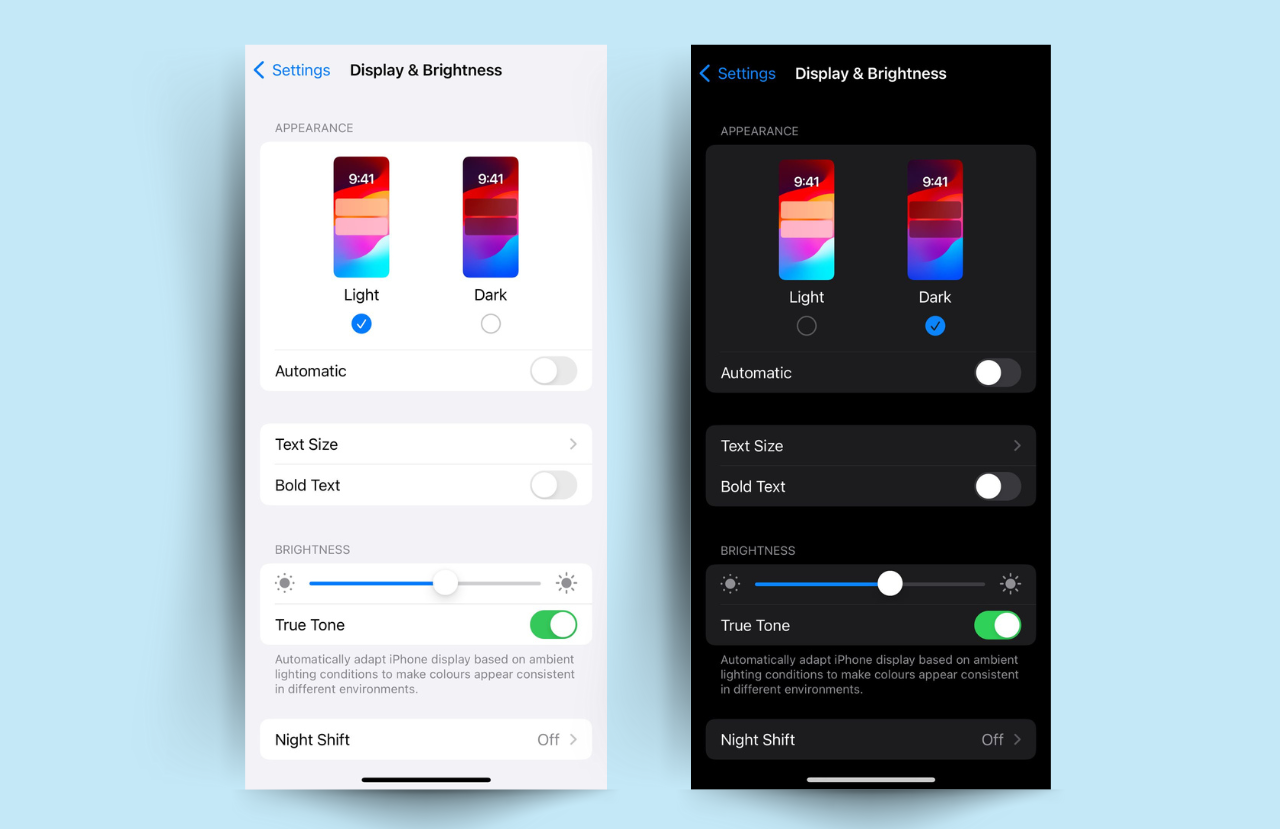It’s a mere few months ago since we last wrote about the CFL and LED health risks while working and living under LED and Fluorescent light. We talked about the effects of flicker, colour temperature and toxicity.
It’s equally scary and comforting that only a few months later, the plot is thickening. It’s scary because the more we learn about the effects of LED and fluorescent light, the more it becomes clear that our current love for LED lighting while demonstrating undeniable benefits also has major drawbacks.
However, it’s not all bad news. It’s important to remember that with knowledge comes power. Once you understand the issue, it’s within your realm of choices to do something about the problem. And if that’s not a good reason for optimism, we don’t know what is.
Out of obscurity- CFL and LED light health awareness is growing
It’s very reassuring that the harmful effects of LED and fluorescent light no longer live in the obscure dungeons of science. Research is overwhelming to the point where the New Zealand Ministry of Health considers it important enough to dedicate a page on its website to the subject (1).
The French Agency of Food, Environmental and Occupational Health & Safety (ANSES) warned about the dangers of LED in a 400 page lengthy report that was updated in 2019 (2).
BUT there are two sides to every coin.
The popularity of LED and CFL lights (3, 4, 5, 6)
Once thought to be the lighting solution of early adopters willing to pay top dollar, these days, LED residential lighting is the lighting of choice for the average consumer. But on top of that, governments are keen on cutting CO2 emission and the commercial market segment (including government) is now the biggest driver in the rise of LED and CFL lighting.
And while we are talking numbers, the Asia-Pacific region that was once lagging sees the biggest growth on a global scale.

Our eagerness for LED and CFL is down to some clear benefits.
LED lights are
- small and bright
- dropping in price
- energy efficient
- long lasting and durable
- widely available in an increasingly wide range of uses
CFLs (or Compact Fluorescent Light, the recent form of fluorescent bulbs), largely sit in between incandescent bulbs and LEDs when it comes to energy efficiency, life span, cost of purchase. With the considerable drop in price of LEDs, plus the fact that you can’t use a dimmer on CFLs, this means that the scale of popularity is quickly swinging in favour of LEDs.
So with the big global push toward energy efficiency, our intentions are noble and the reasons for the continuous market shift are understandable.
But not all is well in the world of LED and CFL.
It’s not just your home, it’s everywhere.
Our determination to become more energy efficient seems to go hand in hand with an unwritten permission to also increase our use of light. On a worldwide scale artificial lighting is increasing by around 6% per year, and as much as 20% in some areas (6).
What’s interesting is that despite our commitment to replace our incandescent bulbs with high efficient LEDs, the significant rise in LED use is no longer led by the residential consumer market. What the Research and Markets study on street light is telling us, is that our exposure to LED and CFL lighting is rising rapidly and governments all over the world are encouraged to update old-fashioned street lights with bright, economical and cheap LED options.(3)

Likewise, the use of LED in hospitals, parks, schools and offices is also seeing a steep increase. (4)
And if street lights weren’t enough, the ANSES Report sends a warning for the increase in use of LED in vehicle headlights, some of which are too bright. (2)
This tells us that our exposure to LED and CFL is no longer limited to your laptop or your kitchen light after dusk, which is still the assumption in many health recommendations. It’s very concerning that our subjection is largely underestimated and with the current prevalence of LED and CFL, it’s becoming very hard to avoid chronic exposure.
The issue is so worrying that the AMA (American Medical Association) saw the need to issue an official policy statement addressing the astronomical rise in LED street lights. (7)
I mean, this must be serious, right?
Are we heading for trouble?
It’s all too easy to forget that as human beings, we have evolved under a natural rhythm of day and night. Light is more than just a simple source of energy. In a way, light communicates with living organisms. It tells them when it’s time to go to sleep, when to hunt or migrate and when to work on the next generation. The human introduction of artificial light started interfering with those powerful messages. What started with an innocent candle continues to grow. As things stand, the effects are significant and they are not going away.
So what are the health problems associated with chronic exposure to LED and CFL?
Colour Temperature concerns or the astronomical increase in blue light exposure
Some of you may remember the physics class where white light was sent through a prism and subsequently diffracted into its components: violet, blue, green, yellow, orange and red. It’s the same thing you see when you admire a beautiful rainbow. The bottom-line is that white light is not a straightforward white beam, but made up of all the colours of the rainbow. Literally.
We use Colour temperature (CT) to measure the amount of each of these colours present in the white light source. In simple terms, this translates in the whiter the light, the higher the blue content and the higher the CT rating.

White LED used in many street lights measures at CT 4000K or 5000K containing a high level of short-wavelength blue light. As a reference, an incandescent bulb measures at 2400K. (7)
Understandably, the high CT rating commonly seen in LEDs used in commercial and governmental set-up has everything to do with cost. Here’s why.
The commonly used white LED relies on phosphor conversion. Simply put, the Light-Emitting Diode (LED) produces blue light, at the same time the phosphors do their part in adding some green, red and yellow wavelengths to the mix to create something that approximates natural light. How well that approximation is done depends on the type and the quality of the phosphors, and that’s where the issue lies. Quality of phosphors come at a cost, and the now affordable LEDs are typically also the ones that skimp on the phosphors. As a result, they emit the most significant amounts of blue light.
CFLs equally rely on phosphor, but in a different set-up. CFL light uses a phosphorous-coated glass tube containing liquid mercury. Like LEDs, CFLs are heavy on the blue light side of the spectrum, with the added concern of heavy metal toxicity thrown into the equation.
What’s the issue with blue (and green) light?
Both lighting options present the same health concerns associated with blue light but also all the way up to the green spectrum.
That’s because blue and green light (right up to wavelengths of 550nm) suppresses melatonin five times more efficiently than the high pressure sodium lamps with the same light output that used to be the standard for street lighting for decades. Given that melatonin is the body’s communicator for day and night rhythm and often referred to as the sleep hormone, disrupted sleep is the unfortunate result. (8)
But on top of that, chronic exposure to LED light can speed up the ageing of retinal tissue, contributing to a decline in visual acuity test results and an increase in certain degenerative diseases such as age-related macular degeneration. (2)
You can read some more about the effects of artificial light on sleep and health in our previous blog on the health effects of blue (and green) light.
But wait… there is more: to flicker and to fade
But the issues with CFL and LED light are not just because of the blue light association.
On top of problems resulting from blue light, there are also the health issues that come with ‘flicker’, caused by tiny fluctuations in electric current. Flicker is the potential culprit for
- Headaches and migraines
- Visual fatigue
- Decreased concentration
- Seizures
- Aggravation of autistic behaviour
Updated regulations have resulted in using low flicker LEDs, but that merely means that the flicker is not as bad as it used to be. Even low flicker LED may have health-effects on humans. (9)
Imagine what LED flicker can do to your health when the use is so significant and widespread there is no getting away from it.
So what can you do about your CFL and LED light health concern?
We earlier stated that with knowledge comes power. So, now that we understand the problem and the consequences, the important question is, what can you do about it?
It may feel discouraging that there is very little you can do about the lighting used in our streets, parks, hospitals, schools and supermarkets. But the good news is that we can take control to a wider extend than you may realise.
Here’s what you can do:
- Avoid the use of normal LED or CFL lights throughout the house. Replacing them with amber coloured blue blocking bulbs to remove all blue light. They are perfect to fit throughout the home for general use, are low EMF, and produce zero harmful flicker. However, the red Twilight bulbs address the full spectrum of blue and green light. They are the pic of the bunch for the bedroom.

- Remove light emitting electronic devices from the bedroom.
- Replace bulbs from your bedside table and reading lights with sleep lighting (removing both the green and blue light) to guarantee a restful night’s sleep. Our Twilight Bedtime Bulb is ideal for reading during the late hours prior to bedtime. Not only are they flicker free, but they also emit no sleep distrusting blue or green light. Enjoy your deep and restful sleep!
- Alternatively, our night-time blue light glasses reduce exposure to blue and green light up to 550nm by 100% for bedtime reading and television watching.
- Install screen filters on your phone and use blue light blocking software for your computer such as Iris.
- Finally, to reduce blue light exposure during daytime, purposefully designed blue light computer glasses reduce blue light by 50% over the entire blue range (Not all computer glasses do this, so check before you buy!).

This is important because you want to ensure the daytime computer glasses focus on filtering blue light at 455nm, which is the peak wavelength emitted by screens and led lights. It’s all in the detail!
Easy peasy.
When all is said and done
What we take from this is that complex problems rarely have simple answers. There is no going around the need for lighting at night, not only in our homes and businesses but also outdoors on our streets. The need for energy efficiency may be serious, but so too is minimizing human risk from bad lighting.
Luckily, there are simple things that you can do to minimise the effects of our love for LED and CFL. And that is a very, very reassuring thought.
References
(1) Ministry of Health, New Zealand Government. (2019). Blue Light. Wellington: Ministry of Health website. (https://www.health.govt.nz/your-health/healthy-living/environmental-health/household-items-and-electronics/blue-light )
(2) Anses. (2019). Press kit: Effects of systems using LEDs on human health and the environment ANSES 2019 expert assessment. Maisons-Alfort: Anses Press kit. (https://www.anses.fr/en/system/files/PRES2019DPA01EN.pdf )
(3) Research and Markets. (2018). Oceania LED and Smart Street Lighting: Market Forecast (2018 – 2027). Dublin, Ireland: Research and Markets.(https://www.researchandmarkets.com/reports/4722161/oceania-led-and-smart-street-lighting-market )
(4) Research and Markets. (2019). Asia-Pacific LED Lighting Market by Product Type, by Installation Type, by Application, by Geography Market Size, Share, Development, Growth and Demand Forecast, 2014-2024. Dublin, Ireland: Research and Markets.(https://www.researchandmarkets.com/reports/4770551/asia-pacific-led-lighting-market-by-product-type?utm_source=GNOM&utm_medium=PressRelease&utm_code=5b9tcm&utm_campaign=1244936+-+Asia-Pacific+%2458+Billion+LED+Lighting+Market+to+2024+-+Growing+Popularity+of+Smart+LED+Lighting&utm_exec=chdo54prd)
(5) Grand View Research. (2020). LED Lighting Market Size, Share & Trends Analysis Report By End Use (Residential, Commercial, Industrial, Others), By Product (Lamps, Luminaires), By Application (Indoor, Outdoor), And Segment Forecasts, 2020 – 2027. Pune: Grand view research.( https://www.grandviewresearch.com/industry-analysis/led-lighting-market )
(6) Fortune Business insights. (2019). Lighting Market Size, Share & Industry Analysis, By Lighting Type (LEDs, CFLs, sLFLs, HIDs, Halogens and Incandescent), By Application (General Lighting, Automotive Lighting, Backlighting, Others), by End User (Residential, Commercial and Industrial) and Regional Forecasts, 2019-2026. Pune: Fortune Business Insights. (https://www.fortunebusinessinsights.com/press-release/lighting-market-9300 )
(7) Franz Hölker, Timothy Moss, Barbara Griefahn, Werner Kloas, Christian C. Voigt, Dietrich Henckel, Andreas Hänel, Peter M. Kappeler, Stephan Völker, Axel Schwope, Steffen Franke, Dirk Uhrlandt, Jürgen Fischer, Reinhard Klenke, Christian Wolter & Klement Tockner. (2018). AMA policy statement street lights. Cambridge, MA : The Journal of the American Association of Variable Star Observers. (vol. 46, no. 2, p. 193).
(8) Fabio Falchi, Pierantonio Cinzano, Christopher D. Elvidge, David M.Keith, Abraham Haim. (2011). Limiting the impact of light pollution on human health, environment and stellar visibility. Amsterdam : Journal of Environmental Management. (Volume 92, Issue 10, pp. 2714-2722)
(9) Sunil Batra, Chandrakant S Pandav, Sonia Ahuja. (2019(. Light Emitting Diode Lighting Flicker, its Impact on Health and the Need to Minimise it. Delhi : Journal of clinical and diagnostic research. (https://jcdr.net/articles/PDF/12880/41491_220419_41491_CE%5bRa1%5d_F(KM)_PF1(AJ_SHU)_PFA(SL)_PN(SL).pdf)







